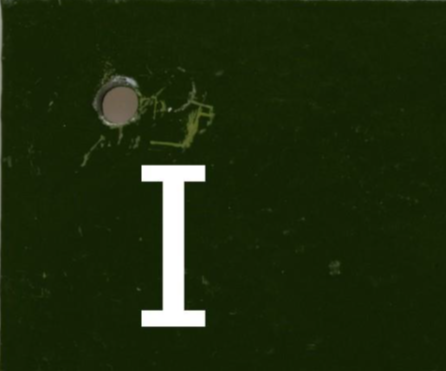Comparative assessment of paint systems for use on heritage artillery at coastal forts in England: experimental design and interim report
DOI:
https://doi.org/10.14568/cp29444Keywords:
Ferrous metals, Corrosion, Coatings, Conservation, Artillery, AnalysisAbstract
This work aims to harmonise conservation practises for 20th century artillery housed in forts around the English coast by identifying a suitable protective coating for the nation-wide collection. Groups of analogue samples of five coating systems are undergoing 15 months of accelerated aging in the laboratory and three years real-time in situ exposure at two coastal sites in the UK. The impact of this on their chemical, physical, aesthetic and protective properties is being measured using pull-off tests, impact testing, colourimetry, FTIR, oxygen consumption and EIS. Results of the physical tests at three and six months accelerated aging and one year in situ exposure are reported in this paper. Based on set criteria and this data set, the Sherwin Williams 1 epoxy coating system is currently the best performing system.
Downloads
References
BS EN ISO 12944-6:2018, Paints and varnishes. Corrosion protection of steel structures by protective paint systems (2020), https://www.iso.org/standard/51378.html (accessed 2023-08-19).
Alcántara, J.; de la Fuente, D.; Chico, B.; Simancas, J.; Díaz I.; Morcillo, M., ‘Marine Atmospheric Corrosion of Carbon Steel: A Review’, Materials 10(4) (2017) 406, https://doi.org/10.3390/ma10040406.
Alcántara, J.; Chico, B.; Díaz, I.; de la Fuente, D.; Morcillo, M, ‘Airborne chloride deposit and its effect on marine atmospheric corrosion of mild steel’, Corrosion Science 97 (2015) 74–88, https://doi.org/10.1016/j.corsci.2015.04.015.
Asami, K.; Kikuchi, M., ‘In-depth distribution of rusts on a plain carbon steel and weathering steels exposed to coastal–industrial atmosphere for 17 years’, Corrosion Science 45 (2003) 2671-2688, https://doi.org/10.1016/S0010-938X(03)00070-2.
Chico, B.; Alcántara, J.; Pino, E.; Díaz I.; Simancas, J.; Torres-Pardo, A.; de la Fuente, D.; Jiménez, A.; Marco, J.; González-Calbet, J. M.; Morcillo, M., ‘Rust exfoliation on carbon steels in chloride-rich atmospheres’, Corrosion Reviews 33(5) (2015) 263-282, https://doi.org/10.1515/corrrev-2015-0025.
Rémazeilles, C.; Refait, P., ‘On the formation of β- FeOOH (akaganéite) in chloride-containing environments’, Corrosion Science 49(2) (2007) 844–857, https://doi.org/10.1016/j.corsci.2006.06.003.
Jarman, J.; Salvatin, J., Comparison of Polyurethane and Polysiloxane coating systems in marine environments, Bachelor dissertation, Department of material engineering, California polytechnic state University, San Luis Obispo (2013), https://digitalcommons.calpoly.edu/matesp/87/ (accessed 2023-06-24).
Arukalam, I.; Oguzie, E.; Li, Y., ‘Nanostructured superhydrophobic Polysiloxane coating for high barrier and anti-corrosion application in marine environment’, Journal of colloid and interface science 512 (2018) 674-685, https://doi.org/10.1016/j.jcis.2017.10.089.
BS EN ISO 8501-1:2007, Preparation of steel substrates before application of paints and related products (2007), https://www.iso.org/obp/ui/#iso:std:iso:8501:-1:ed-2:v1:en (accessed 2023-08-19).
Binder, Model KBG 240, Constant climate chamber with large temperature/humidity range, in Technical data sheet (2022), https://www.binder-world.com/uk-en/product/asset/180638?cHash=701d3078ba34b5ecc1edd17bcce81618 (accessed 2023-08-07).
Hemmerich, K. J., ‘General ageing theory and simplified protocol for accelerated ageing of medical devices’, Medical Device and Diagnostic Industry Ind Qual Assur, (1998), http://www.mddionline.com/article/general-aging-theory-and-simplified-protocol-accelerated-aging-medical-devices (accessed 2023-08-07).
International, ISO 12944, Corrosion protection of steel structures by protective paint systems (2019), https://international.brand.akzonobel.com/m/5f44067b30402a97/original/ISO12944_UK_LR.pdf (accessed 2023-08-07).
Sherwin Williams, Iso 12944, Systems Guide 2020 edition, online (2020), https://protectiveemea.sherwin-williams.com/Documents/InformationCentre/iso-12944_coatings-system-guide.pdf (accessed 2023-08-07).
Hempel, How to select the right paint system: Guidelines for corrosion protection in accordance with ISO 12944, online (2019), https://asset.source.thenbs.com/api/pdf/78cc1a4a-2ae7-4615-b787-7e29fa790a3f (accessed 2023-08-07).
Steelkote by Baril, Product brochure (2017), http://www.baril.cz/dokumenty_ostatni/17_1-01112017_SteelKote_Brochure_WEB_EN.pdf (accessed: 07/08/23).
Pretzel, B, ‘Now you see it, now you don’t: lighting decisions for the Ardabil carpet based on the probability of visual perception and rates of fading’, in Proceedings of ICOM-CC 15th Triennial Meeting, vol. II, Allied Publishers, New Delhi (2008) 759-765, file:///C:/Users/CHAM/Downloads/ICOM-CC_2008_New%20Delhi_122.pdf (accessed 2023-06-24).

Downloads
Published
How to Cite
Issue
Section
Categories
License
This work is distributed under a Creative Commons Attribution License (CC BY-NC-ND 4.0) which permits use, distribution, and reproduction in any medium following no commercial or derivatives, provided the original author and source are credited.
Copyright remains with the authors.






